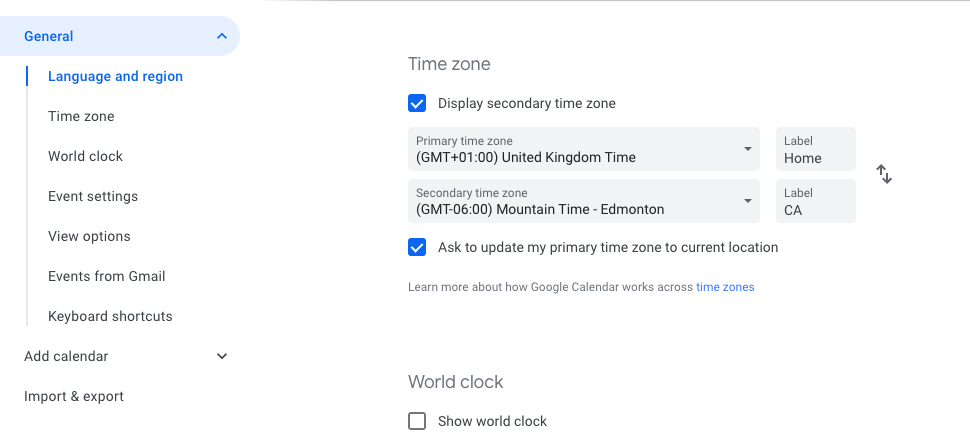One of the biggest perks of being a full-time freelance writer and business owner is that I get to call the shots. I can decide which projects to accept and which to turn down. I also get to decide who I work with. And unlike if I was searching for a full-time job, I’m not limited in my search area.
I’ve worked with clients all over the world. I’ve edited ebooks in Australia, worked on website copy in Canada and helped US business owners with their marketing. When you work remotely, you open up a whole world of possibilities – literally.
But working with people in other countries is not without its challenges. I’ve run up against a few issues in my years as a freelancer, and I’ll outline them all below. If you’re getting ready to start a project with someone in a different time zone, pay attention to these tips…
1. Add their time zone to your calendar and desktop
The first thing you’re going to want to get used to is the time difference. This can catch you off guard, particularly if you need to observe any deadlines. When working with clients in the USA and Canada, I’ve adopted a system where I agree to all work that needs to be completed the DAY BEFORE it needs to be done. My “end of the day” is the middle of the working day in the USA and Canada. And my “start of the day” is their middle of the night. So if I leave it until the morning to confirm work, I can lose half a day.
To remedy this, I add all my client’s time zone to my Google calendar. This will allow you to see your scheduled tasks alongside their timezone. This also makes it a lot easier to schedule calls.

2. Adjust your spell checker to their region
Trying to keep region-specific grammar rules in your head is an absolute nightmare. An easier way to manage this is to write for your local audience and then paste the content into Grammarly with the local language activated. This will help you to pick up on local formatting and spelling variations.
3. Get into a routine
When you can’t just pick up the phone and speak to the client, it pays to get into a routine. While working with a client in the US, we got into a great routine. She would send work for the following day at the end of her working day. This would land in my inbox in the middle of the night and I would work on it in the morning. She would then wake up to a completed task. Any amends would be picked up in the middle of the day, ensuring she didn’t have to wait another day to complete the task.
4. Agree on payment terms
Invoicing can get a little more complicated when payment has to cross borders. At the start of any contract, agree on the currency and the payment method to save yourself a headache. PayPal is perhaps one of the simplest ways to invoice overseas clients.
You can even get a PayPal business debit card to allow you to use this money without transferring it to your main bank account. Remember that exchange rates are always changing, so if you choose to invoice in your client’s local currency, this can impact your earnings. You may also need to pay fees to exchange your currency.
5. Get to grips with local regulations
Rules differ by country, so make sure your copywriting doesn’t fall foul of any local advertising rules. If you aren’t sure, always confirm with the client if there are any local regulations you need to be aware of. Don’t worry about them thinking you don’t know what you’re doing, they’re far more likely to appreciate that you’re on top of regulatory issues.



